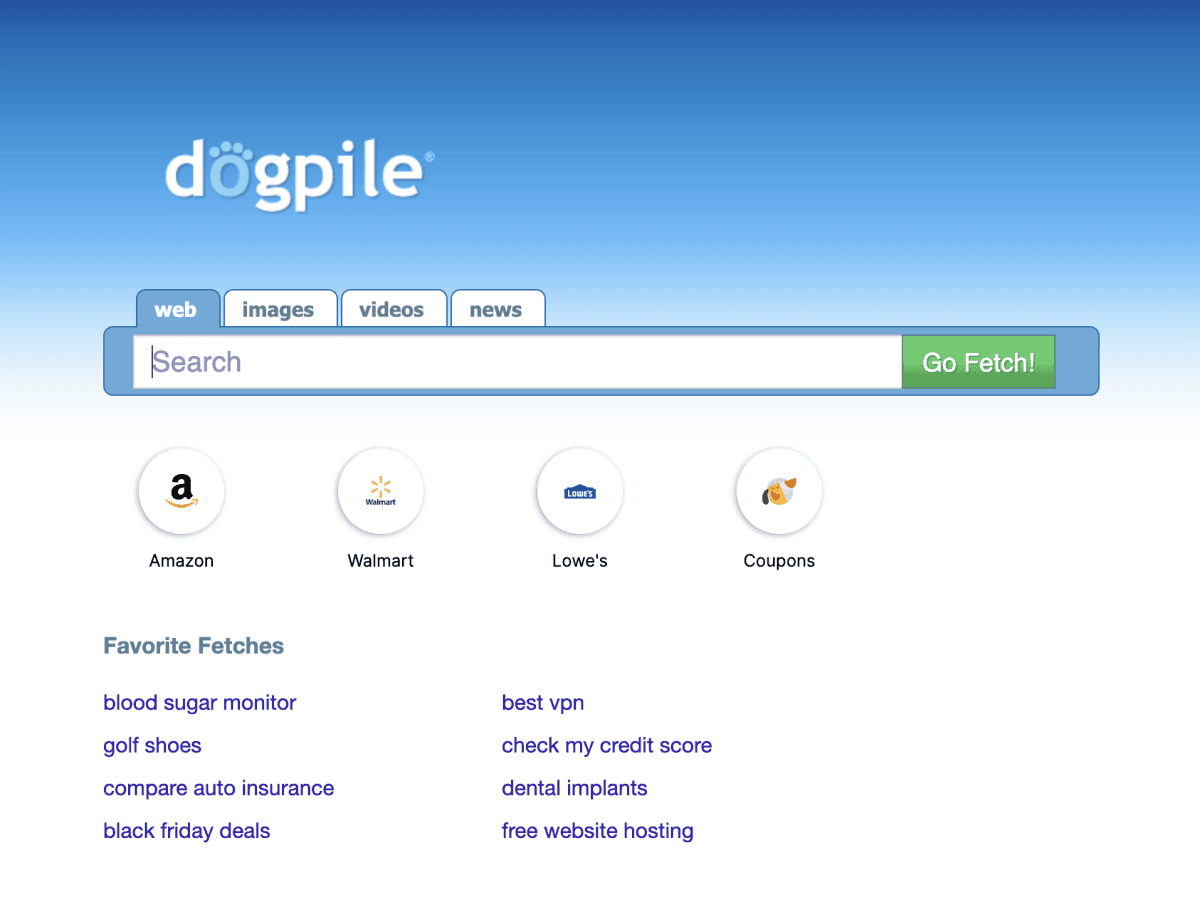As the world today mostly recognizes Google as a verb for search engines, it is difficult to remember a time before Google was created. However, the World Wide Web is full of search engines that time forgot, many of which helped lay the groundwork for a company like Google to come in and give the world a reason to try something new.
Of course, Yahoo and Bing still exist, but they only exist in Google’s shadow. The same goes for DuckDuckGo, which, while offering a solid privacy-focused alternative, has barely made a dent regarding search engine market share. However, the reality exists that for many of us who remember the dot com age around the late 1990s and early 2000s, a myriad of now-forgotten search engines popped up.
AltaVista

Of the most prominent pre-Google search engines, AltaVista is one of the most memorable. On the day it launched in December 1995, it quickly amassed more than 300,000 visitors. However, what impressed AltaVista is that within the first two years, almost 80 million visitors were coming to the search engine every day.
AltaVista was widely praised for its clean website, which made it easy to begin your search without getting distracted by photos, news, graphics, etc. (Looking at you, Bing!). For some time, AltaVista was the 11th most visited website in the world in 1998 and 2000 and was used by 17.7% of internet users.
Also a favorite by professional researchers, none of this was enough to keep AltaVista afloat after its parent company, Yahoo, decided it would shut the website down in 2010, finally taking it offline in 2013.
Excite

A one-time giant in the internet world, Excite was founded in 1994 by six Stanford students. While also a general search engine, Excite allowed internet users to visit a single page and see news, check the weather, get email, and receive instant messages. In other words, Excite launched as a one-stop destination for all your favorite internet activities.
By the time 1997 rolled out, Excite was experiencing around 11.8 million daily visitors and was on track to be purchased by Yahoo for as much as $6 billion. At the same time, Excite’s founders approached Google’s Sergey Brin and Larry Page, who felt that Google was taking up too much of their time and offered them $750,000 and then $1 million for their project.
Sadly, negotiations fell through, but it’s an incredible what-if story, especially considering Excite still exists as a search engine almost nobody remembers exists.
HotBot

Originally launched in May 1996, the 28-year-old HotBot was one of the most popular search engines of the 1990s. Interestingly, the search engine was launched in partnership with Wired magazine, which covers much of the industry.
Although HotBot initially gained popularity, it was acquired by Lycos in October 1998 and ran alongside the Lycos search engine. However, HotBot did not receive the same level of support as its parent browser, leaving customers wanting more features.
Ultimately, HotBot went through a series of ups and downs, only to be sold in October 2016 for only $155,000. After the website was shut down, it was repurchased a few years later and relaunched as a privacy-focused search engine. Still, it’s hard to imagine finding any measure of success as time has long forgotten the name.
Dogpile

With arguably one of the worst names in search engine history, Dogpile was nonetheless remarkably popular. Capable of pulling website results from Yahoo, AltaVista, HotBot, WebCrawler, and other search engines, Dogpile was a catch-all for internet searches.
After launching in November 1996, the site saw some initial success, at least enough to be sold for $4 billion in July 2020. At that time, the website received a facelift and a second lease on life that would ultimately help it win JD Power awards in 2006 and 2007 for “Best Residential Online Search Engine Service.”
Unfortunately, Google and even Bing have made any memories of Dogpile distant enough that it’s barely even a blip on the radar anymore. Surprisingly, the website aggregates search results from Google, Yahoo, and even Yandex today, but it’s still using its weird name, making it hard for anyone to take it too seriously.
The image featured at the top of this post is ©dennizn/Shutterstock.com.

